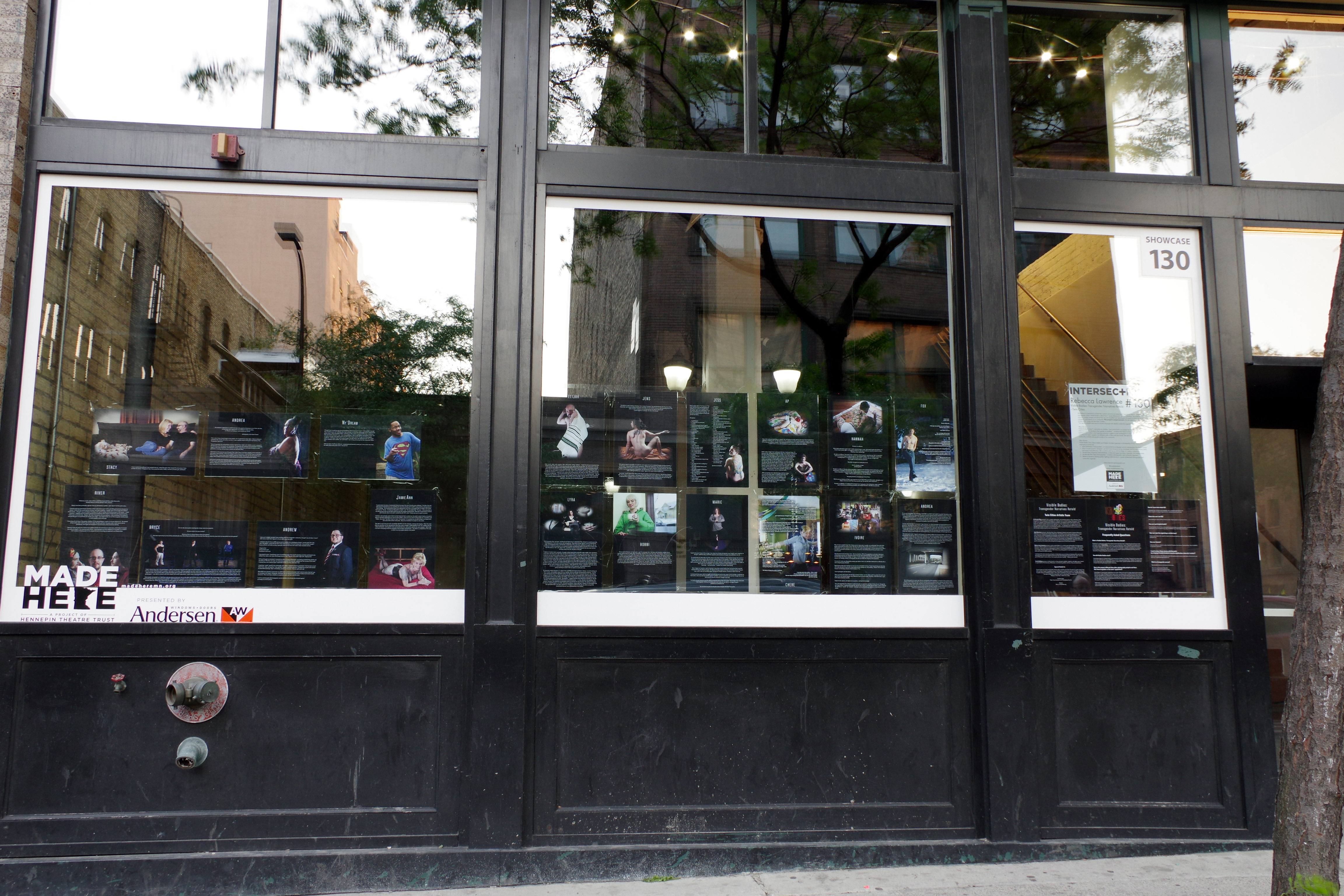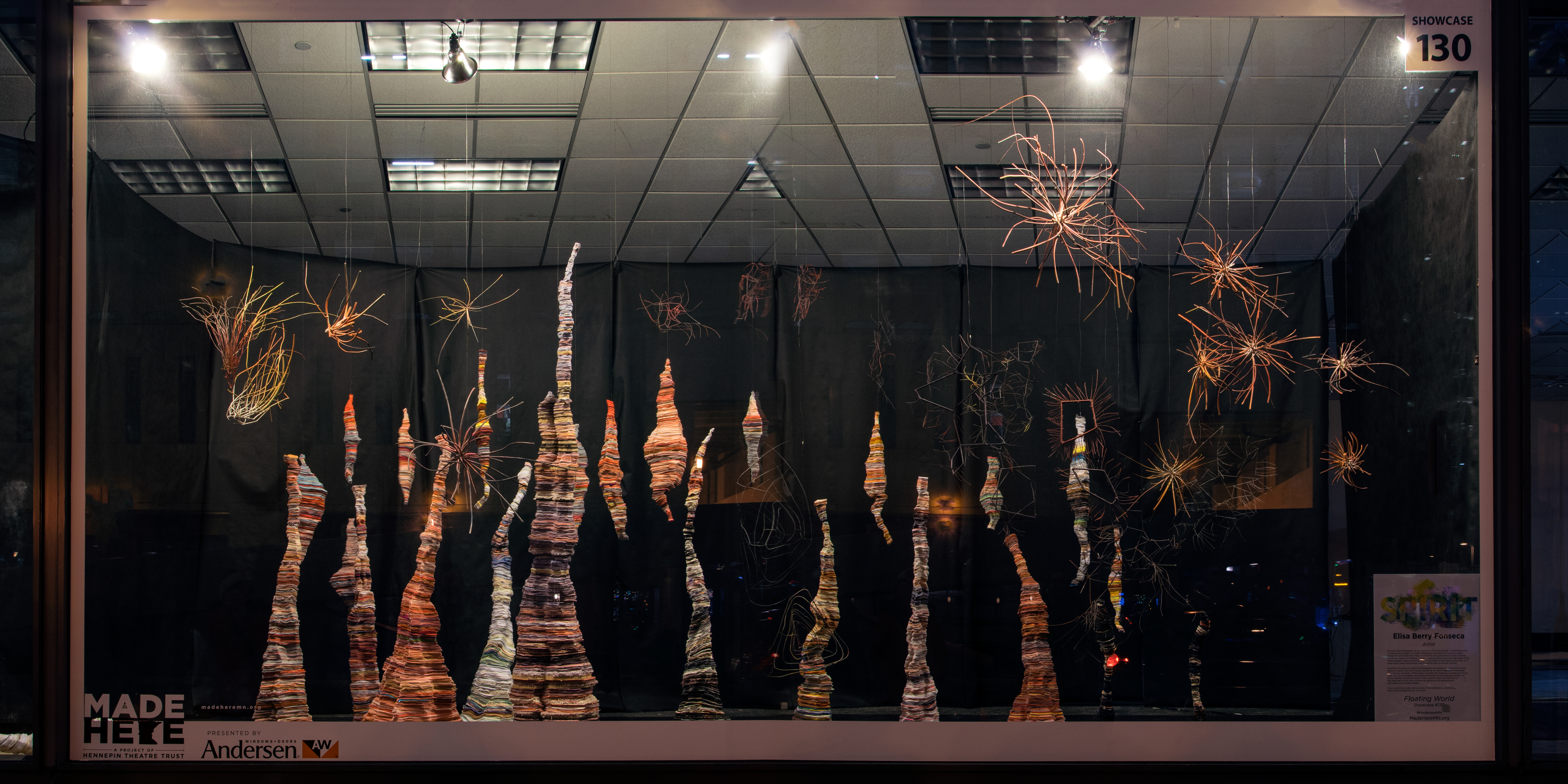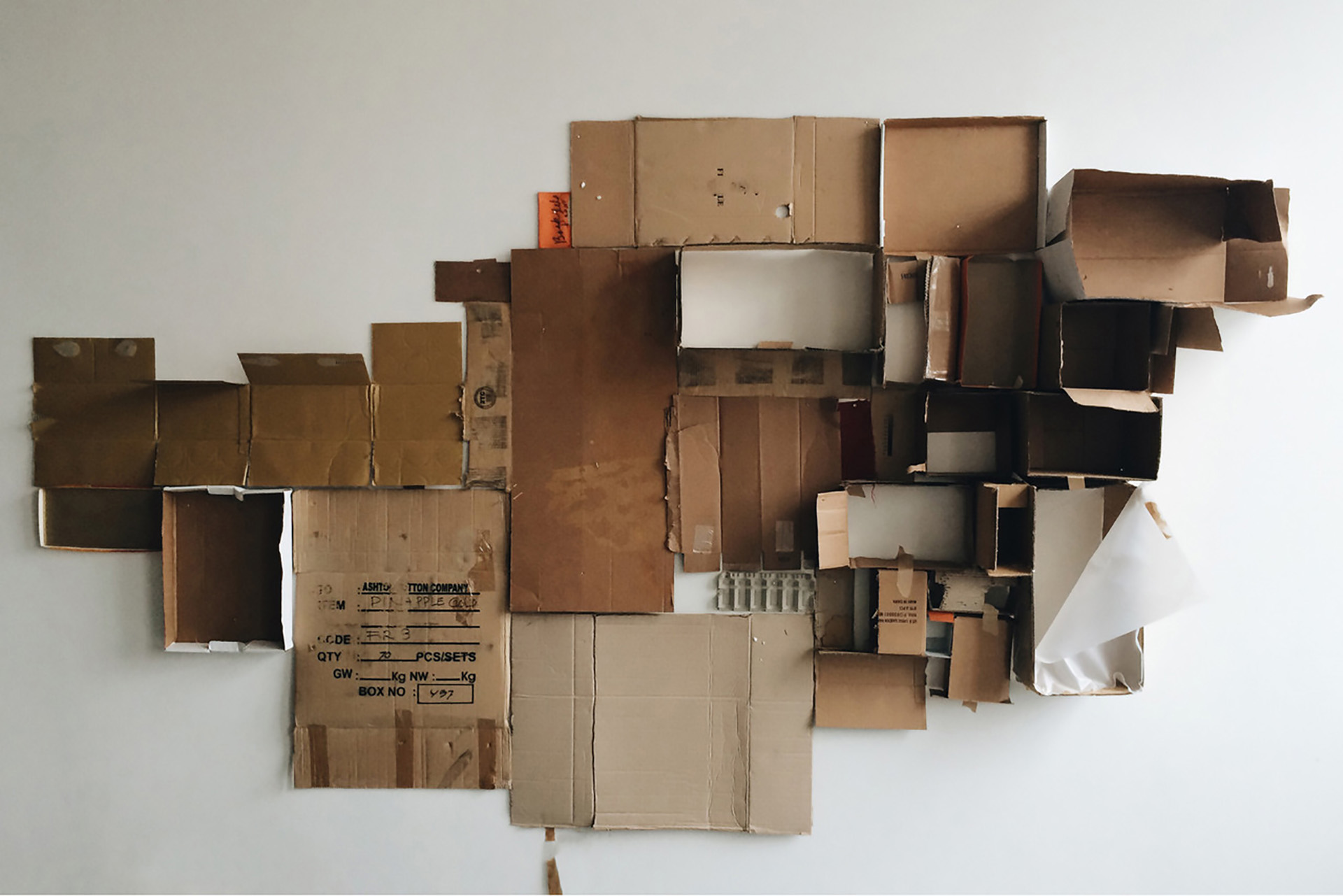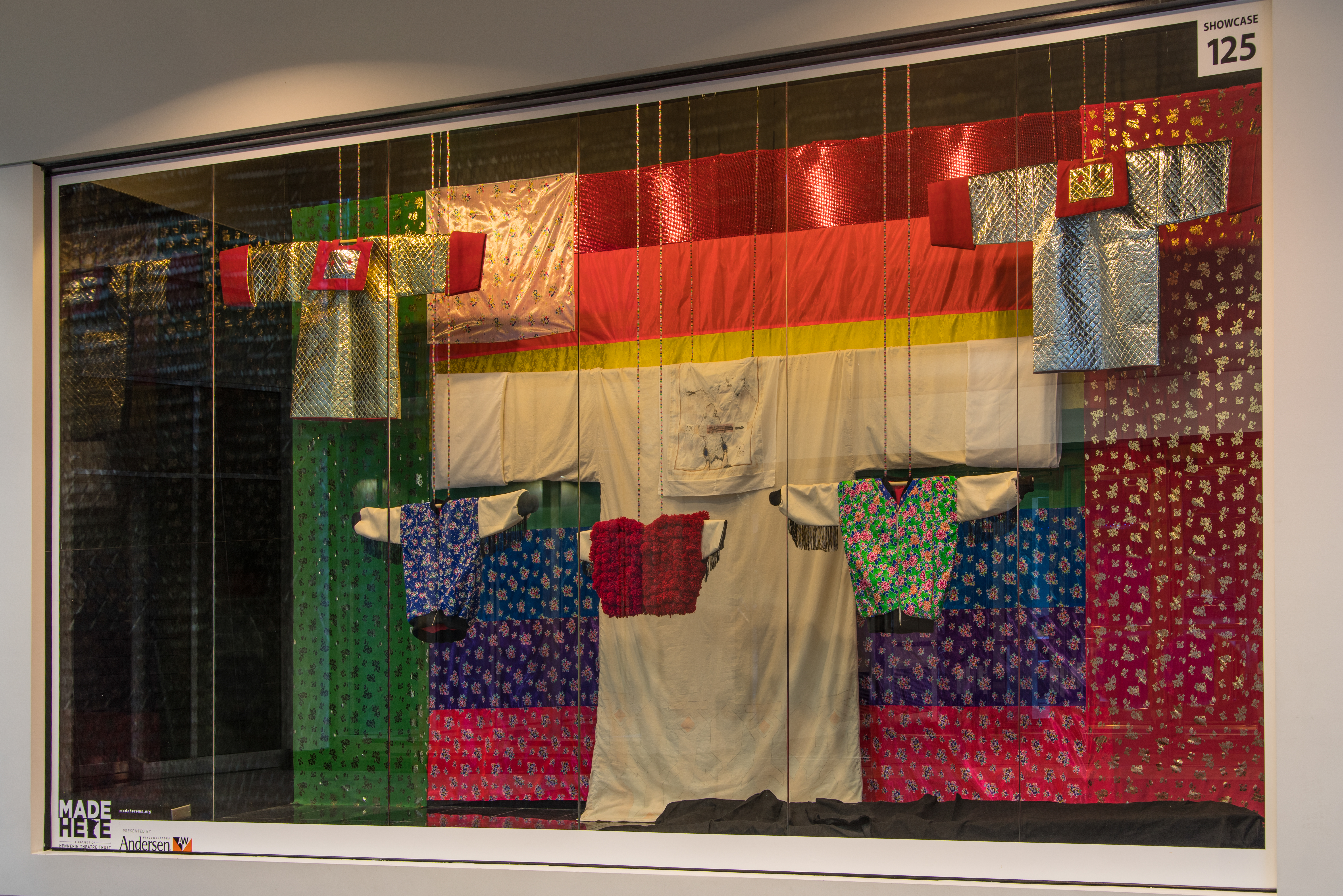Storefront art programs reflect cities’ changes & challenges
During the Great Recession, as the U.S. retail economy suffered the effects of the market collapse and rising unemployment, public officials and arts administrators in cities around the country noticed a problem on their streets: empty storefronts. And many of those leaders, in an attempt to bring attention and activity to darkened windows and shuttered spaces, decided to fill the vacancies with art.
The concept wasn’t new: Retailers have always displayed their wares creatively in shop windows, artists and arts organizations had used storefronts as their canvas in the past, and more commercially focused pop-up shops had been a trend for nearly a decade by the time the recession hit. Not all of the vacancies were new, either: Many storefronts programs targeted spaces that had sat empty for years or even decades, in neighborhoods that had already been struggling before the economy dealt an additional blow. But fueled by the recession, art in storefronts proliferated in the late 2000s and early ’10s, in cities big and small.
In Seattle, for instance, “there was a 30 percent empty storefront rate” during the recession, says Line Sandsmark. Sandsmark is the executive director of Shunpike, the statewide arts organization that now houses the city’s Storefronts program. The program was originally founded in 2010 in collaboration with the city and neighborhood associations in Chinatown-International District and Pioneer Square, two areas hit especially hard by the economic downturn.
The original incarnation of Storefronts Seattle provided space for creative enterprises as well as installations, inviting artists and entrepreneurs to use pop-up space to test new ventures. A few of those have successfully transitioned into lasting independent businesses, including the Seattle Pinball Museum, with over 50 functional pinball machines that visitors can play; Tuesday Scarves, where owner and designer Rian Robison works on her handmade accessories right in the storefront window; and Massive Monkees’ the Beacon, a community hip-hop dance studio offering classes for all ages, with a professional crew that performs and competes internationally.

In San Francisco, it was the mayor — Gavin Newsom, now California’s lieutenant governor — who first suggested putting art in empty storefront windows. The San Francisco Arts Commission, a department of the city, partnered with the Office of Economic Development to figure out how to make the idea happen.
“It developed into, ‘If we’re going to do this, let’s really do this right, and use this as a transformative moment to show people the power that art can have on a streetscape,’” says Judy Nemzoff, director of the Arts Commission’s Community Investments program. “We knew that by doing something more spectacular than just hanging a piece of artwork, we could really begin to make a difference in terms of how people viewed an entire block.”
The Arts Commission installed art in storefronts in five districts and received a National Endowment for the Arts grant for placemaking in the Mid Market neighborhood before ending the program. While it was active, though, Nemzoff says that it was important to the organizers to work with artists from the districts that the storefronts were in, and to encourage projects that spoke to each neighborhood’s culture and history.
For example, in the Mission district, traditionally home to many Chicano and Latino residents as well as artists, Jet Martinez and Kelly Ording drew inspiration from the neighborhood’s history of fortune tellers. For their project “Ms. Teriosa,” the artists got permission from the property owner to paint the entire front of the building; they invited passersby to drop questions into a slot, and then posted their responses as “fortunes” in the window.
Martinez has gone on to work with the San Francisco Arts Commission on major public art projects, Nemzoff says, pointing out — as several storefronts program administrators have — that these pop-up projects offer valuable experience for emerging artists.

Compared with San Francisco’s top-down support from the mayor and the city, the origin of Minneapolis’ art in storefronts program Made Here was decidedly more grassroots. Joan Vorderbruggen originally created her own Artists in Storefronts program after pitching the idea to arts organizations to no avail, and ended up organizing the project independently with support from her neighborhood association, the Whittier Alliance.
After successfully developing Artists in Storefronts, Vorderbruggen got the opportunity to curate and install art in a mostly empty, then-transitioning development in downtown Minneapolis. That eventually led to full-time work with the Hennepin Theatre Trust, where she leads Made Here as the organization’s director of public art and placemaking.
Made Here’s window installation series are organized around themes, such as “Brilliance” and “Reflection.” A simplified application process invites many emerging creators or those who don’t identify as “professional artists” into the program, says Vorderbruggen, and the open-ended themes allow for a range of subject matter, from whimsical to socially critical. For the “Intersections” series, artists Rebecca Lawrence, Jie Wronsky-Riley, Adja Gildersleve, and Garrett Hoffman showed their work “Visible Bodies: Transgender Narratives,” a collection of photos, videos, and personal statements from the trans community. For “Spirit,” artists Koua M. Yang and Oskar Ly explored identity, history, and fashion with “Tsho Hmoob,” a piece about the traditional Hmong female shirt.
Made Here seems likely to have a healthy future in Minneapolis’ downtown, both because of Vorderbruggen’s work to bring a variety of public art there — including a five-story mural of Minnesota native Bob Dylan by the Brazilian street artist Kobra — and because the neighborhood continues to see long-term vacancies.
In many other cities, though, storefronts programs that launched after the recession have now ended, largely because there aren’t as many empty spaces to fill.
In Colorado Springs, the Cultural Office of the Pikes Peak Region ended their Art in Storefronts program after collaborating with other local institutions to fill storefronts in the city’s downtown from 2012 to 2014. The partner organizations were responsible for curating their own spaces and working directly with artists. The Cultural Office decided to end the program in part because there simply weren’t any empty storefronts left downtown.
“While I couldn’t necessarily credit Art in Storefronts with activating that change, it was part of this renaissance and revitalization. You wind up putting yourself out of business,” says Andy Vick, the Cultural Office’s executive director.
When vacant spaces in Chicago’s downtown became scarcer after a three-year storefronts program, the Chicago Loop Alliance chose another kind of empty space — the city’s alleyways — as a new site for temporary art.
Previously, Pop-Up Art Loop enlivened storefronts with a combination of window art and gallery shows. Now, the Activate program combines live performance, large-scale installations, and a party atmosphere in pop-up alley events. Activate’s rotating locations are typically announced just before the events, adding to their spontaneous feel, explains Michael Edwards, the Chicago Loop Alliance’s executive director.
Seattle, one of the fastest-growing cities in the country, has also seen available space dwindle since Storefronts launched. The program has survived by joining forces with one of the major drivers of the city’s growth: Amazon.
Since 2013, Amazon has become Shunpike’s primary partner for Storefronts, providing space in vitrines — street-facing window boxes — in the company’s campus in the South Lake Union neighborhood. Between those windows and some additional storefront spaces in the Meydenbauer Center, a convention center in the Seattle-neighboring city of Bellevue, Storefronts now hosts 28 storefront displays each year.
Through this transition to a new phase of Storefronts, artists have used their installations to comment on the larger transition of a changing Seattle. Morgan Cahn, who works directly with Storefronts artists as the program’s coordinator, and who is an artist and a Seattle native herself, sees artists grappling with the trends of growth and irreversible changes to the city’s landscape.

For example, artist Satpreet Kahlon set out to create a vibrant portrait of South Lake Union, the district where Amazon relocated in 2009, but found that it lacked the variety of buildings, people, and streetscapes seen in other downtown neighborhoods. Kahlon’s eventual Storefronts installation, 2015’s “As We Are,” is constructed from a variety of found pieces of cardboard — bringing to mind Amazon’s cardboard shipping boxes, whether or not the reference is intentional. Another piece in South Lake Union, Libby L. Gerber’s “Mapping Decay,” is a drawing of a crack in a sidewalk made to look like a topographical map, calling attention to people’s relationship with the natural environment.
For Line Sandsmark, it is important for Shunpike to try to keep artists from being forced out of Seattle as property values rise — to keep the city from driving out the thriving creative economy that helped make it such an attractive destination in the first place.
“The gentrification of the city is pushing out both diversity and anyone who’s middle-class or lower income, which of course often impacts artists,” she says. “And so it’s really important for us to be able to do anything we can to counteract that trend.”
With the Storefronts program, Sandsmark wants to become more nimble so that the organization can quickly snap up properties as they become vacant — a necessity in a city where few spaces stay empty for long. She’s also eager to find intersections between art and the tech world, as tech continues to fuel the Seattle metro’s growth. That could include public art installations with digital and interactive elements — and, as Storefronts coordinator Cahn suggests, it could also include artists creating “storefront installations” online. After all, Amazon’s success has made the Internet just as much of a “retail space” as any found on commercial streets.
Sandsmark also hints at the potential of art in vacant retail spaces beyond downtown streets, as malls in Seattle and across the country continue to lose tenants or close down completely.
That’s an area where Minneapolis’ Made Here has found some success, installing storefront art both at the Mall of America (just outside the city) and inside the second-story skyways between downtown buildings, which are home to many mall-like retail spaces and indoor plazas. Most recently, the program has been concentrated in one street-level stretch of Hennepin Avenue, in part to allow for walking tours. But the skyways do continue to loom over the city’s downtown.
“The skyways feed a segregation of our community that I feel is a great detriment to our downtown. An ‘I’m up here, you’re down there’ kind of mentality,” says Joan Vorderbruggen. “In my opinion, based on some of the travel that I’ve done to other cities, the segregation that exists in downtown Minneapolis is far more profound than other cities that don’t have skyways.” Art and other programs that call attention to the ground level can make the street more of a shared space, she says.

Part of tackling downtown Minneapolis’ challenges, says Vorderbruggen, is to involve more of the people who use the streets — not just the skyway-focused corporate workforce — in public art and placemaking efforts. From the beginning of Made Here, she says, the organizers heard that being able to see art on the street made people’s commutes significantly less stressful. She wants to make sure that the area residents who are most vulnerable and in need are receiving those benefits, too. Made Here has begun to partner with human services organizations to reach and employ more of the community, including by working with youth arts organization Kulture Klub Collaborative to provide paid internships for homeless youth.
Both Vorderbruggen and Seattle’s Morgan Cahn also emphasize the importance of paying artists. Made Here and Storefronts Seattle each pay artists a $500 stipend. “If we want to be a city that is rich with art and culture, we need to make sure that artists are getting paid,” Vorderbruggen says. “You can’t make beautiful things if you’re not able to afford to eat.”
Making sure artists are well compensated and able to express their vision is an important part of the future of storefronts programs, Cahn says. As such programs end or evolve in cities that are no longer struggling, storefront programs may now thrive in smaller cities, suburbs, and rural areas that haven’t yet felt the effects of economic recovery. If so, it will be important to resist the trend of artists and lower-income residents getting priced out when growth leads to rising property values.
“I think unless the coordinator and the tenants have connections and are rooted in the neighborhood, there is the potential negative impact of projects like this contributing to gentrification,” says Kristen Murray, who participated as an artist and organizer in the St. Anthony Park Pop-Up Shop, which ran in 2012 in St. Paul.
No matter how storefronts programs and their successors continue to evolve, their basic principle can apply to all communities: Any empty space has the potential to be transformed by artists.
“You can’t overestimate, no matter what city you’re in, the extraordinary wealth of talent and opportunity to partner with local artists,” says Judy Nemzoff of the San Francisco Arts Commission. “Even if you are in a significantly smaller town with significantly fewer arts resources, there are artists who can think creatively about ways to solve problems around streetscape identity and reinvigorating neighborhoods.”
Both the San Francisco Arts Commission and the St. Anthony Park Pop-Up Shop’s organizers have made practical information available for governments or community groups wanting to fill their own storefront spaces with art. Visit San Francisco’s Art in Storefronts page for guidance, and get “Your Idea Here: A Toolkit for Unlocking the Community Potential of Vacant Storefronts” on Creative Exchange’s toolkits page.
Featured image: “Artist in Residence,” artist Rory Wakemup, photo by Bailey Cahlander
